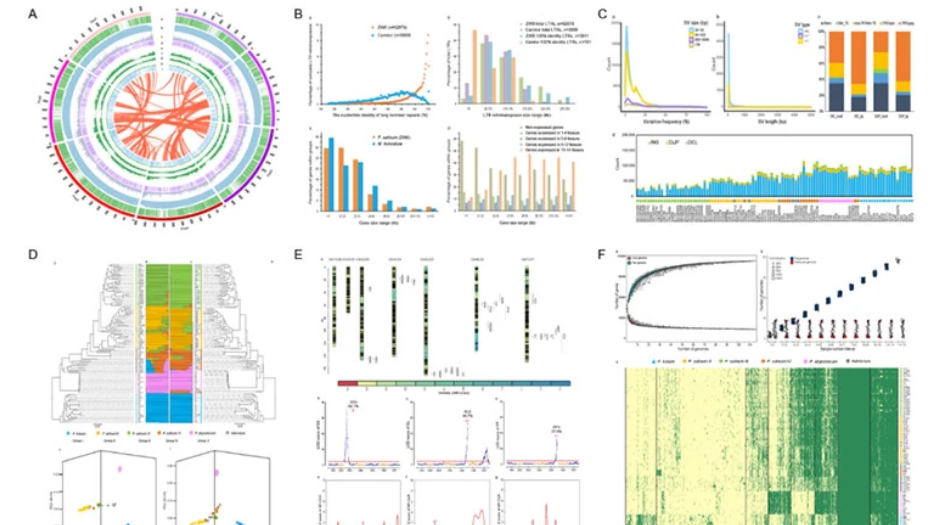
Charts illustrated in "Improved pea reference genome and pan-genome highlight genomic features and evolutionary characteristics." /Nature Genetics
Charts illustrated in "Improved pea reference genome and pan-genome highlight genomic features and evolutionary characteristics." /Nature Genetics
Chinese scientists have completed fine maps of a de novo genome assembly of a pea cultivar, ZW6, which provides an improved reference genome and annotation of the pea, a recently published article on Nature Genetics showed.
ZW6 is a widely grown Chinese pea cultivar. Its genome assembly and annotation were constructed based on a series of genetic sequencing technologies, featuring a 243-fold increase in contig length and evident improvements in the continuity and quality of sequence in complex repeat regions compared with the existing one, according to the article.
The researchers presented the genome diversity of 118 cultivated and wild pea genotypes, which settles a long-standing controversy over the division of a pea by demonstrating that Pisum abyssinicum is a separate species different from the P. fulvum and P. sativum within Pisum.
The researchers also constructed a pan-genome of 116 pea accessions and found that pan-genes preferred in P. abyssinicum and P. fulvum showed distinct functional enrichment, indicating their potential value as pea breeding resources in the future.
"The high-quality reference genome and pan-genome offer insights into pea genome evolution and domestication as well as valuable genomic resources for research in pea genetics and breeding," the article said.
A research team from the Institute of Crop Science at the Chinese Academy of Agricultural Sciences and their domestic and abroad partners conducted the research.
The pea is a multifunctional crop in the food and feed industry, providing protein, starch, fiber and minerals. Endowed with its notable ecological sustainability advantage, it has continued to draw attention since Biologist Mendel uncovered the laws of inheritance through breeding experiments with peas.

